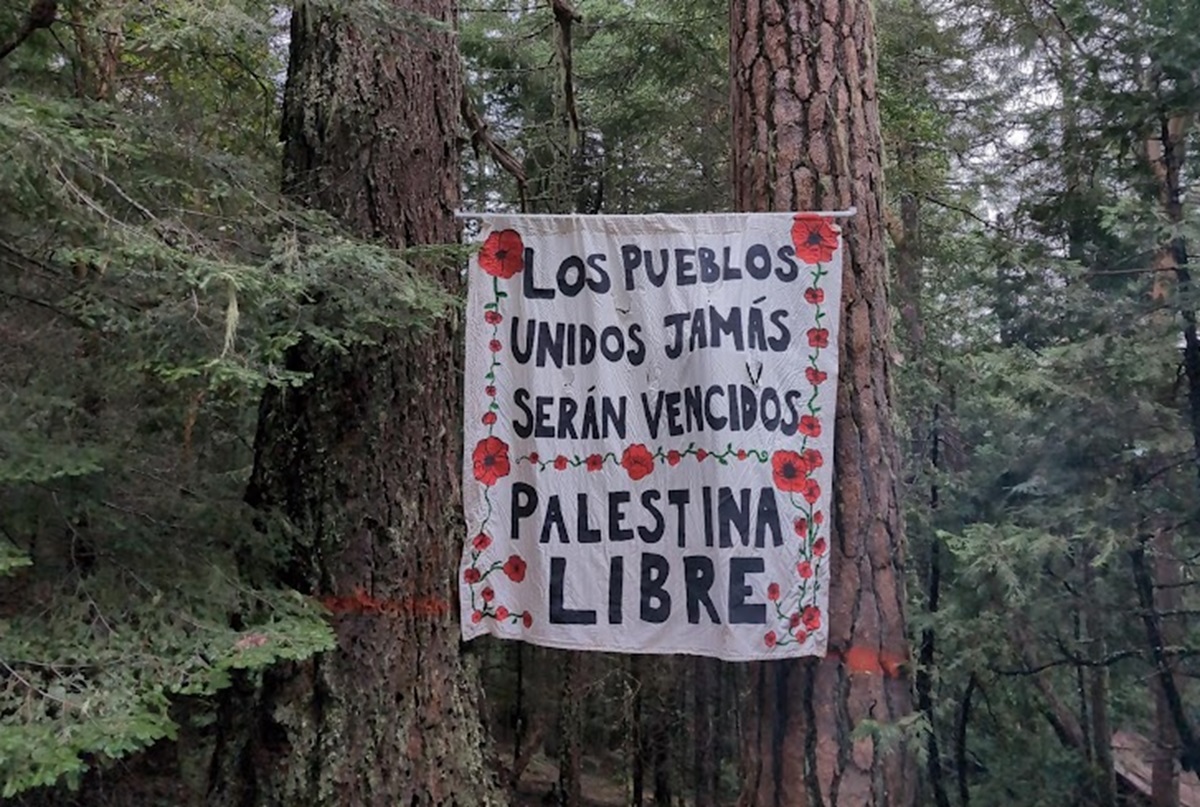Filed under: Canadian Tire Fire, Featured
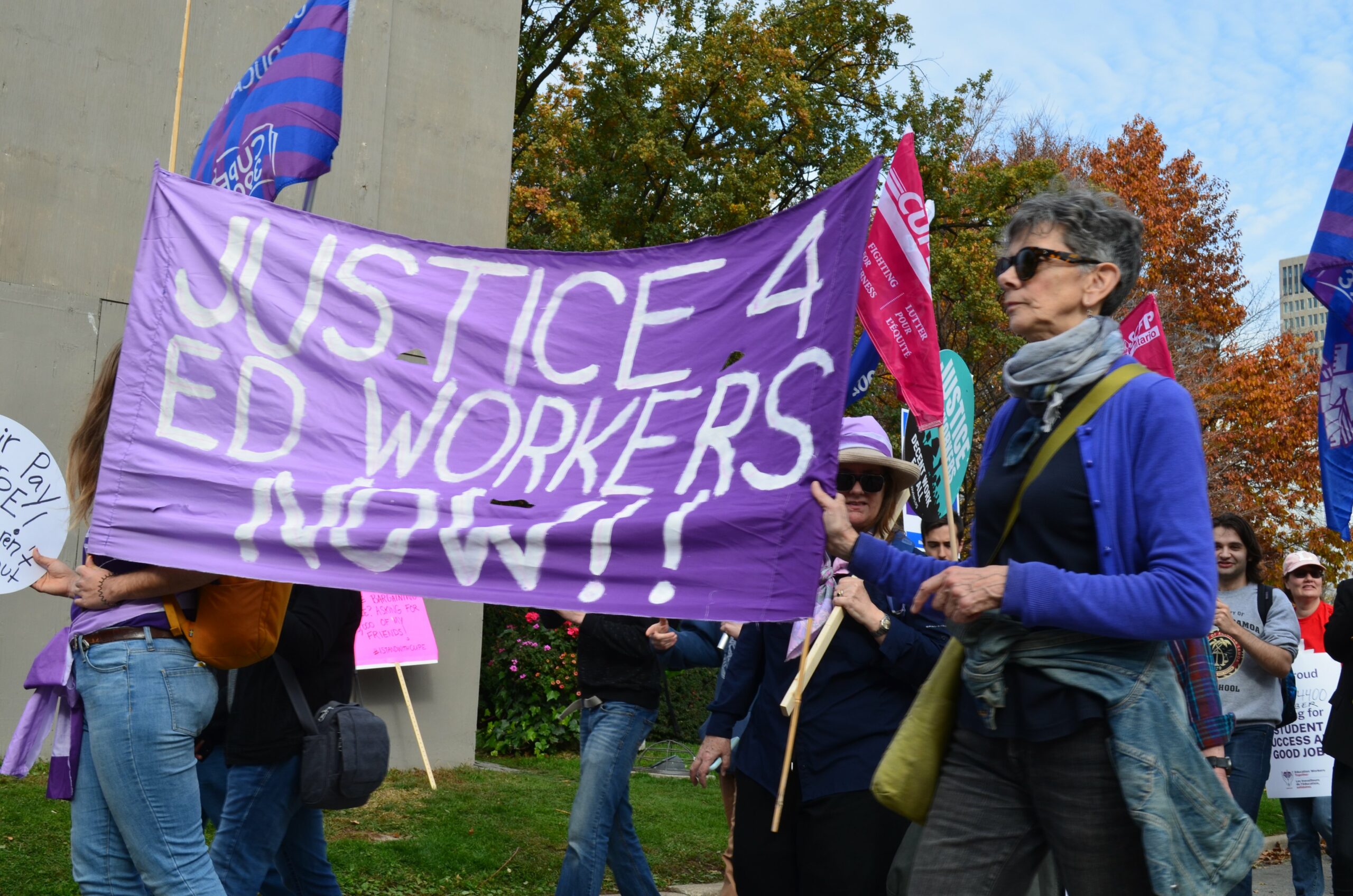
photo: @cersc_csppb
This week we cover the 2-day illegal education workers strike in Ontario that almost turned into a general strike. We also bring you a roundup of housing justice, shelter, and houseless encampment news from across the country.
While we don’t have a full section on the struggle against Coastal Gaslink this week, the fight is definitely not over. A recent communique out of eastern Ontario claimed responsibility for several acts of sabotage “along main arteries of the freight system” in the early hours of November 5th. “CGL, RBC, Kkkanada – you are not safe and you have ignited something that will never die.”

The legal repression of Six Nations land defenders also continues. On November 14th and 15th supporters are welcomed outside the Cayuga courthouse as two Haudenosaunee land defenders facing charges connected with 1492 Land Back Lane will be in front of a judge.
You can now find us on Mastodon at @[email protected]. As always, if we’ve been missing projects or stories you think should be in our roundups, please send us tips on social media or by email at canadiantirefire [AT] riseup [DOT] net.
Now let’s get to the news!
Education Staff Hold Two Day Wildcat Strike in Ontario
On November 4th, 55,000 education workers in Ontario launched the first wildcat strike in the province since 2012. Education workers including custodial, support, and administrative staff voted earlier in October to be prepared to strike – an impressive 96.5% in support with a 85% voter turnout. The major point of conflict in the negotiations has been wages. CUPE, the union representing the education workers, said the average wages for this group were around $39,000, making them the lowest-paid education workers in the province. CUPE had originally proposed a 11.7% increase in wages, with the province offering just 1.25-2%.
Workers were in position to strike on November 4th when, earlier that week, Premier Doug Ford announced legislation that would impose a contract on the workers and make it illegal to strike. He also announced the use of the Notwithstanding Clause, a provision in the Charter of Rights and Freedoms, to eliminate the possibility of a legal challenge to the bill. The bill was pushed through the legislature early on November 1st, and at the same time, CUPE announced that workers would be defying the legislation and striking anyways.
On Friday, workers took to picket lines across Ontario, and a large demo was held outside the Ontario legislature. In many districts, schools were forced to close. The Ontario Public Sector Employees Union, who represent other staff in the public school sector including teachers, encouraged their members to walk off the job as well, forcing more schools to close by Monday.
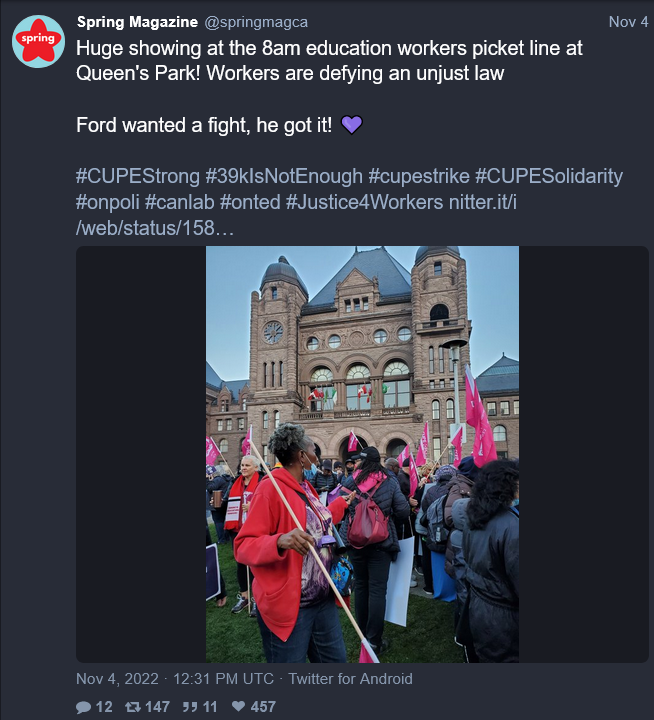
Over the weekend, many of Ontario and the country’s largest unions met to discuss escalating action. Public and private sector unions alike alluded to a call for a general strike beginning the following week. Labour leaders, of which over 100 participated in talks over the weekend, said that a variety of tactics including shutting down ports and other infrastructure were on the table.
Two days into the strike, Doug Ford announced the government would repeal the bill in full if CUPE dropped the strike and came back to the bargaining table. An agreement was made, and the strike ended. Negotiations are set to resume and workers could, in theory, strike again if necessary.
Many are celebrating the swift repeal of the bill forced by workers taking illegal action. The action demonstrated what can be achieved when workers use their collective power to get their demands met.
Unfortunately, in a sense education workers are back in the position they started from before the legislation was passed – had Ford not shifted the goalposts by attacking workers’ right to strike in general, they likely would have gone on strike Friday anyways and could have stayed there until the government came back with a better offer. Some would argue they should have stayed on strike anyways. This juncture represents a point where traditional organized labour comes up against the pressures of public opinion, labour laws and bargaining processes, perhaps at the expense of more radical action. Staying on strike would have represented a shift from a defensive position, of trying re-gain basic rights, to an offensive one.
At best, this action allowed thousands of workers across Ontario and beyond to get a taste of their collective power, and opened people’s imaginations to what is possible when we act together.
Housing and Homelessness Roundup
As winter arrives suddenly and brutally, the conditions of houseless communities become more dire. Their fight for survival, and the organizing in support of them, grows more urgent as the real risk of death from cold weather goes unaddressed by governments, landlords, and capitalists.
A housing for all march and rally was held on November 6th in Vancouver. The march began in Oppenheimer Park with speakers and music.
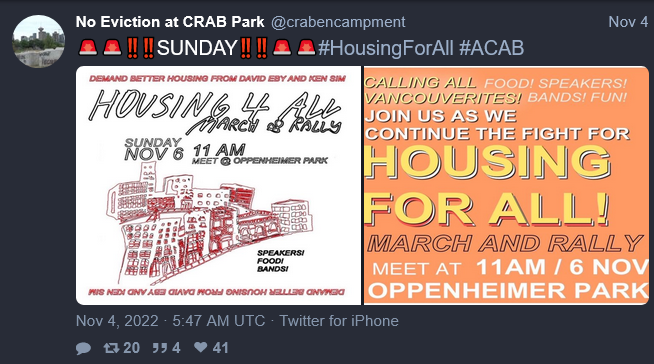
The continued mobilization for housing security and against encampment evictions in Vancouver happens in the context of escalating local hostility to downtown eastside residents and other local houseless communities. After the recent election of a cop-loving mayor, the VPD released their “social safety net report,” a summary of which was leaked before its release. The report was immediately widely condemned as inaccurate and intended to spread misinformation and animosity towards vulnerable communities accessing social services, as well as the social service providers themselves.
As many critical analysts have pointed out, the commissioned report wildly exaggerates the spending on social services in Vancouver by misrepresenting organizations that serve all of BC, or even those that do humanitarian work in other countries, as organizations working locally. They note that the report serves to discredit local government and charities and non-profits, depicting them as wasting money while deaths from poison drugs and homelessness only get worse.

The VPD report is clearly a harmful work of fiction, but it would be wise for us to not jump to the defense of local government and homelessness charities to counter it. This response could position these organizations as altruistic and beyond reproach, glossing over the reality that homelessness charities and non-profits often do profit from the continuation of the conditions that necessitate their existence. Rather than seeing these organizations as the only potential saviors of vulnerable communities, let’s remember that the solutions lie within those communities themselves. The real targets of the report are the people whose lives are cast as drains on the system, and who are seen as not deserving of any actually insufficient support they do get.
Happily, the community has responded to the report in a number of ways, including with a banner dropped nearby reading “FUCK VPD ALL POWER TO THE DTES.”
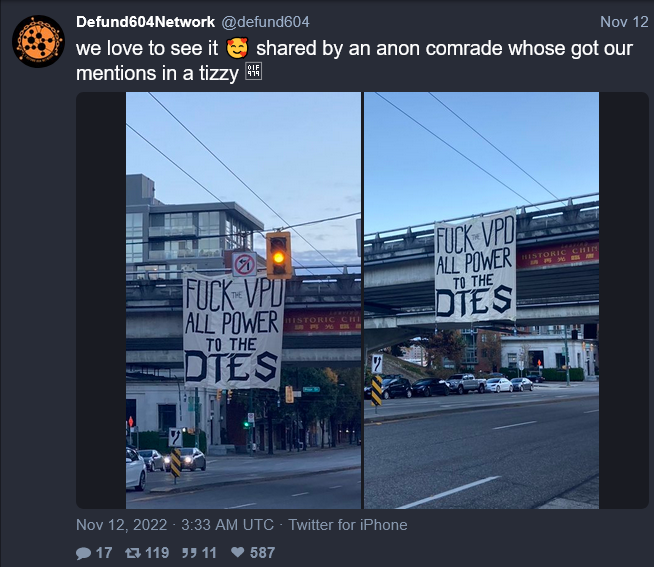
In Toronto, organizers with the Shelter and Housing Justice Network held a rally calling for a end to cuts to shelters. They focused on the need for open and safe shelter space for houseless individuals as winter and cold weather arrive.

Following news of more shelter evictions, the Network has called for another demonstration on November 15th.
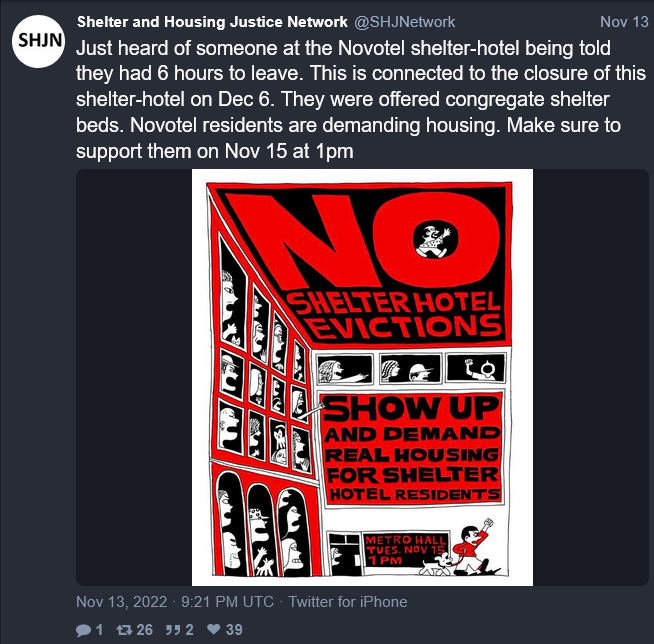
In Montreal, an encampment eviction was planned, and subsequently postponed due to mobilization and outcry. The encampment, under the Ville Marie Expressway, was ordered evicted by the Quebec Ministry of Transport, which wants to do maintenance work on the Expressway above. Residents were given notice but then subsequently told their eviction was being postponed while alternative arrangements were made, but that they would have to leave eventually.
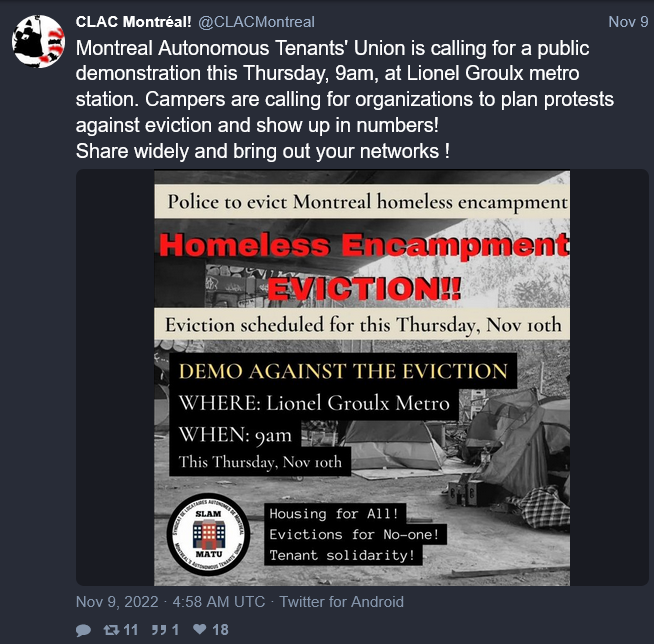
Despite the cancellation, a demonstration planned by the Montreal Autonomous Tenants Union went forward. The protest marched around the adjacent Saint Henri neighbourhood before walking to the encampment, with residents on the other side of the fence surrounding it cheering as the demonstration arrived.





